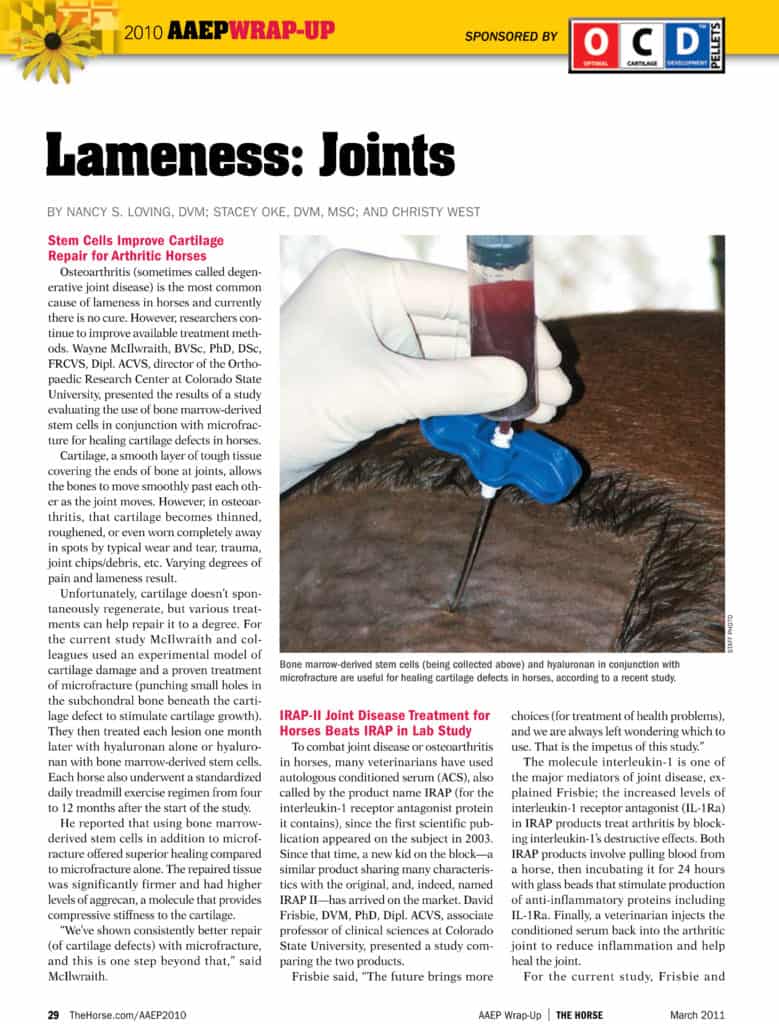
Shock Wave Therapy and PSGAGs: Effects on Arthritis
Researchers recently investigated how certain arthritic joint tissues respond to treatments such as shock wave.

Researchers recently investigated how certain arthritic joint tissues respond to treatments such as shock wave.

Fluid caused little reaction in some horses’ stem cells but promoted or inhibited growth in others.
The Ohio State University College of Veterinary Medicine is seeking horses diagnosed with osteoarthritis to
Researchers are examining a promising genetic lab approach to curing osteoarthritis (OA) in horses.
“The Horse Owner’s Guide to Regenerative Medicine” will take place June 4 from 2:00 to 5:00 p.m., in Lexington

During the 2010 American Association of Equine Practitioners convention, veterinarians discussed the use of stem cells for arthritis in horses, irap vs. irapII, joint health supplements, TMJ disease, non-surgical pastern joint fusion, stifle abnormalities in cutting horses, and embryonic stem cells for tendon repair.

Equine osteoarthritis is expensive to manage, with estimated annual costs as high as $10,000-15,000 per horse to diagnose, treat, and medicate, researchers found in one study.
Any lameness can be tough for a veterinarian to treat and resolve, but pastern joint lameness caused by osteoarthritis can be especially problematic. In low-motion joints, sometimes the solution to lameness troubles is physiologic fusion (fixation of

Equine joint injections can help veterinarians diagnose lameness or medicate a horse’s painful joint.
A joint is defined as an anatomic union or junction between two or more bones. There are three basic types of joints in the horse: Synovial, fibrous, and cartilaginous.

Equine joint supplements have been purported to decrease inflammation, increase mobility, and more. This guide to equine joint supplements includes a seven-step quality evaluation process and tips for choosing a safe and effective product.

Equine arthritis refers to an inflammation of the joint. There are different kinds of arthritis, such as septic arthritis and rheumatoid arthritis. However, the most important arthritis affecting horses is osteoarthritis.
Learn about the normal functions of bones, cartilage, soft tissues, and fluids within the fetlock joint.
The hottest news in equine lameness and surgery was presented the popular Kester News Hour session at the annual American Association of Equine Practitioners (AAEP) convention.
Osteoarthritis (OA) is a major cause of wastage in the equine industry, especially considering that an estimated 81% of the 9.3 million horses in America are involved in equitation and performance. A mainstay treatment for OA is the use of
Osteoarthritis of the distal (lower) hock joints is a common performance problem in sport horses.
Stay on top of the most recent Horse Health news with
"*" indicates required fields